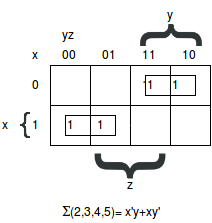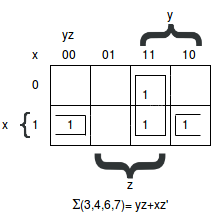COA Tutorial
Basic CO and Design
Computer Instructions
Digital Logic Circuits
Map Simplification
Combinational Circuits
Flip - Flops
Digital Components
Register Transfer
Micro-Operations
Memory Organization
COA_Misc
- Booth's Multiplication Algorithm
- Branch Instruction in Computer Organization
- Data Representation in Computer Organization
- ALU and Data Path in Computer Organization
- External memory in Computer Organization
- Structured Computer Organization
- Types of Register in Computer Organization
- Secondary Storage Devices in Computer Organization
- Types of Operands in Computer Organization
- Serial Communication in Computer organization
- Addressing Sequencing in Computer Organization
- Simplified Instructional Computer (SIC)
- Arithmetic Instructions in AVR microcontroller
- Conventional Computing VS Quantum Computing
- Instruction set used in Simplified Instructional Computer
- Branch Instruction in AVR microcontroller
- Conditional Branch instruction in AVR Microcontroller
- Data transfer instruction in AVR microcontroller
- Difference between Memory-based and Register-based addressing modes
- Difference between 1's complement Representation and 2's complement Representation
- CALL Instructions and Stack in AVR Microcontroller
- Difference between Call and Jump Instructions
- Overflow in Arithmetic Addition in Binary number System
- Horizontal Micro-programmed Vs. Vertical Micro-programmed Control Unit
- Hardwired Vs. Micro-programmed Control Unit
- Non-Restoring Division Algorithm for Unsigned Integer
- Restoring Division Algorithm for Unsigned Integer
- Debugging a Machine-level Program
- Dependencies and Data Hazard in pipeline in Computer Organization
- Execution, Stages and Throughput in Pipeline
- Types of Pipeline Delay and Stalling
- Timing Diagram of MOV Instruction
- Advantages and Disadvantages of Flash Memory
- Importance/Need of negative feedback in amplifiers
- Anti-Aliasing - Computer Graphics
- Bus Arbitration in Computer Organization
- Convert a number from Base 2 (Binary) to Base 6
- Cache Coherence
- EHCI
- Cache Memory and Virtual Memory
- Electrical Potential and Potential Difference
- RAM and Cache
- SIM and RIM instructions in 8085 processor
- Clusters in Computer Organization
- Data Types and Addressing Modes of 80386/80386DX Microprocessor
Examples
F(x,y,z) = Σ (2,3,4,5)
First, 1 is marked in each min-term that represents the function. Hence, 010, 011, 100, 101 are marked with 1's.
Subsequently, we have to find possible adjacent squares. These are indicated in the map by two rectangles, each enclosing two 1's.

The upper right rectangle represents the area enclosed by x'y.
The lower left rectangle represents the product term xy'.
The sum of these two terms gives the simplified expression:
F= x'y+ xy'
Note: There are cases where two squares in the map are considered to be adjacent even though they do not touch each other. In the figure below, m0 is adjacent to m2 and m4 is adjacent to m6 because the min-terms differ by one variable.

Algebraically verification:
m0+m2 = x'y'z'+ x'yz'= x'z'(y'+y) = x'z'
m4+m6 = xy'z' + xyz'= xz' + (y'+y) = xz'
2. F(x,y,z) = Σ(3,4,6,7)

As you can see, there are four squares marked with 1's, one for each min-term of the function.
The other two adjacent squares are combined in the third column to give a two-literal term yz.
The remaining two squares with 1's are shown in the above diagram with their values enclosed in half rectangles. When these two half rectangles are combined, it yields two literal term xz'.
The simplified function becomes F= yz+xz'.


